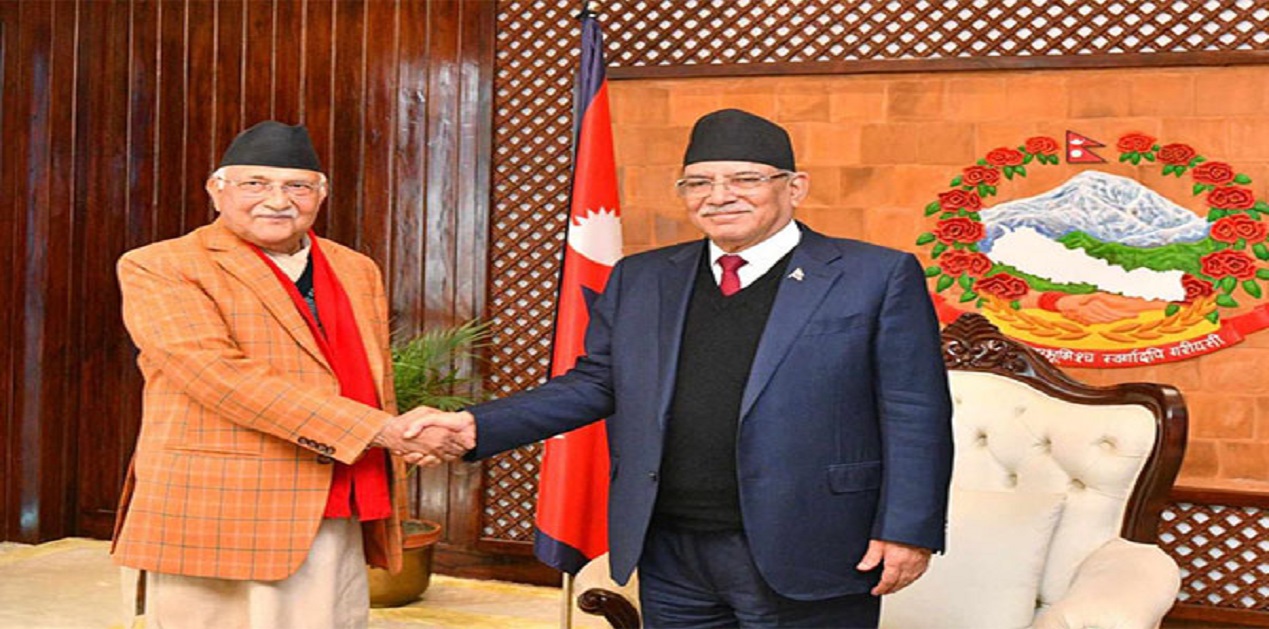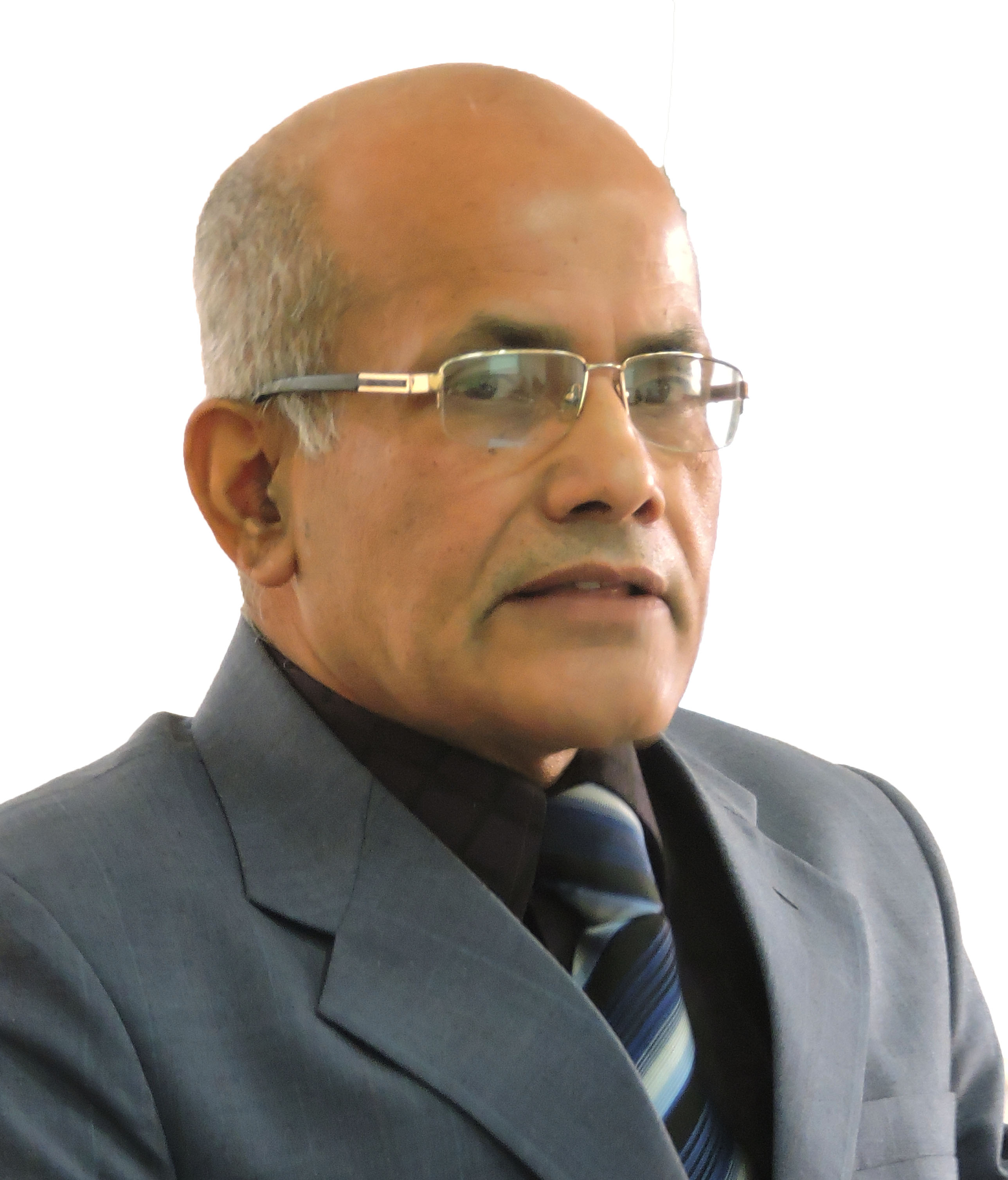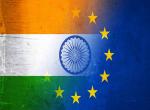On March 4, Pushpa Kamal Dahal, Prime Minister and the leader of the Communist Party of Nepal-Maoist Centre (CPN-MC) stunned the nation by severing a 15-month-long alliance with Nepali Congress and forging a coalition with the left parties, including the Communist Party of Nepal – Unified-Marxist-Leninist (CPN-UML) and the Nepal-Unified Socialist (CPN-US). Other political parties that joined the new left-led government, included the pro-West Rastriya Swatantra Party (RSP), the pro-left Janata Samajbadi Party (JSP) and other fringe parties. A section of the people has the impression that the abrupt change in the equation of the coalition government was not possible without the support of external power. But some people believe that none but the political parties in the country made such changes. Be whatever may be the case, this change of the guard in the federal government might have significant implications both on the domestic and external fronts.
Because of the change in the coalition partners, Dahal had to seek a vote of confidence in the House of Representatives (HoR), the parliament. Though he needed the support of just 138 members to prove his majority in the 275-member HoR, he managed to get the support of 157 lawmakers, including 32 lawmakers from the Maoist Centre of which he is the leader, apart from the support of 75 lawmakers from the CPN-UML, 21 from the RSP, 12 from the JSP, 10 from the CPN-US, 4 from the Nagarik Unmukti Party, 1 from the Aam Janata Party and one independent lawmaker.
In November 2022, the Maoist Centre had contested the parliamentary elections in alliance with the Nepali Congress against the CPN-UML. Since the Nepali Congress emerged as the largest political party in that election, it was almost set to form a government with the support of the Maoist Centre and the other parties. But to the surprise of all, Dahal switched his side from the Nepali Congress at the eleventh hour and joined hands with CPN-UML to become Prime Minister for the third time on December 26, 2022. Again, just within three months he ditched the CPN-UML during the Presidential election and formed a new government with the support of the Nepali Congress. Now this time, for reasons unknown, he joined hands with the CPN-UML and other parties after severing ties with the Nepali Congress.
To justify his cause, PM Dahal said that he had no other way but to ally with CPN-UML as he did not get due cooperation from the Nepali Congress. As if this was not enough, he labelled the Nepali Congress as a reactionary party. Deputy General Secretary of the Maoist Centre, Barsha Man Pun stated that the new alliance was formed for no purpose other than serving the national interest. Swarnim Wagle, Vice Chairman of RSP said, “There is public despair rife with economic slump and bad governance. So, we want quality and prompt service delivery, which the PM has also taken seriously.” However, certain members of parliament termed PM Dahal’s effort to severe his ties with Nepali Congress as betrayal, immoral and unnatural.
The timing of the change in government in which all three important communist parties have joined hands in Nepal is very crucial. The country is under the grip of a severe recession as a result of declining investment and growing unemployment. Out of frustration, people have started raising their voices against the growing corruption, nepotism and non-delivery of the government. Voice for the re-establishment of the Hindu state in place of the secular state is also catching momentum. Besides, the southern neighbour, India, is on the verge of having crucial general elections soon and Maldives in our region is fast moving on an anti-India track.
Speculations are rife that Beijing might have engineered the change in coalition government in Nepal. Based on the more frequent visits of the Chinese delegations to Nepal and the visits of influential Nepalese leaders to China, it was as far back as January this year that Mrigendra Bahadur Karki, executive director of the Centre for Nepal and Asian Studies (CNAS) of Tribhuvan University anticipated the possibility of unity between the communist parties of Nepal. He categorically said “They [Chinese] are trying to influence Nepali politics. They are exploring another modality of uniting the communist parties.”
It was at the initiative of the Chinese that the CPN-UML and the Maoist Centre not only formed an alliance but also contested the parliamentary elections in 2017. The two parties subsequently merged and a new political party called Nepal Communist Party was formed. Later, these parties separated from each other under the verdict of Nepal’s Supreme Country in 2021. It is, therefore, not surprising that the same force that encouraged the two parties to unite earlier might have done so again. But KP Sharma Oli, the leader of CPN-UML does not subscribe to this view as he said that it was not Beijing but the Nepalese political parties that brought about this change.
Both the Indian and Chinese governments have expressed their willingness to work closely with the newly formed coalition government in Nepal. However, Dhruva Hari Adhikari, a senior journalist opines that the ouster of the Nepali Congress from power and the emergence of the communist parties in the driving seat might not be in India’s interest.
In the existing fluid situation, PM Dahal might not take any risk of antagonising India or any other power centre in Nepal. So, the Indian-aided projects or its investment in hydropower and other sectors in Nepal is not likely to be affected. Similarly, expectation is also that the $500 million U.S. Government’s Millennium Challenge Corporation (MCC) project which aims at improving road quality and facilitating cross-border electricity trade between Nepal and India would not be affected. But at the same time chances are high that Nepal might sign agreements with certain countries that could have far-reaching implications for the future of Nepal.
On the domestic front, the change in the equations at the federal level has already made its impact on the provincial governments. The crucial conference in Lumbini on March 11 and 12 which ten Nobel Peace laureates and some heads of state were expected to attend got cancelled. Now the bureaucratic structure at all three levels of the government in the country and in the foreign diplomatic missions might change. The call for the re-establishment of the Hindu state might also meet setbacks at least for the time being.
Only time will show how the left-led government under Pushpa Kamal Dahal would address such issues as recession, unemployment, corruption, red-tapism, etc., apart from maintaining balanced relations with its southern and northern neighbours on the one and taming the USA-China rivalry in Nepal on the other. Success or failure in addressing some of these issues would largely shape the future of Nepal.
(The paper is the author’s individual scholastic articulation. The author certifies that the article/paper is original in content, unpublished and it has not been submitted for publication/web upload elsewhere, and that the facts and figures quoted are duly referenced, as needed, and are believed to be correct). (The paper does not necessarily represent the organisational stance... More >>
Image Source: https://d3lzcn6mbbadaf.cloudfront.net/media/details/ANI-20240304060641.jpg











Post new comment